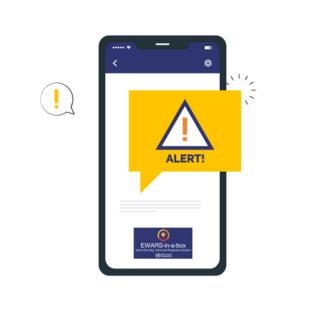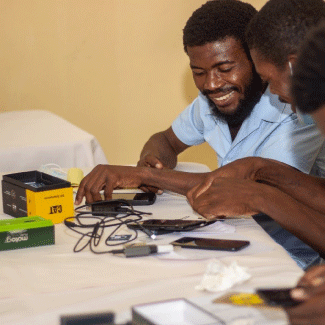Early Warning, Alert and Response (EWAR) is the organized mechanism to rapidly detect and respond to signals that might indicate potential acute public health events. Establishing an EWAR process provides an early warning of acute public health events and then connects this function to an immediate public health response. It is one of the most immediate and important functions of a surveillance system.
The objective of EWAR is to support the early detection and rapid response to acute public health events of any origin.
Early Warning, Alert and Response System (EWARS)
WHO’s Early Warning, Alert and Response System (EWARS) is an application designed to improve disease outbreak detection in emergency settings, such as in countries in conflict or following a natural disaster. Specifically, EWARS consist of an online, desktop, and mobile application that can be rapidly configured and deployed within 48 hours of an emergency being declared.
EWARS in a box: Everything you need in the field
EWARS in a box is a kit containing the essential equipment needed to establish surveillance and response in emergencies.
Deployed during an emergency as an adjunct to the national disease surveillance system, it is a collection of all the equipment needed to rapidly establish early warning, alert and response activities, particularly in difficult and remote field settings without reliable internet or electricity.
The kit can support surveillance for 50 fixed or mobile clinics serving roughly 500,000 people.
Requires
Mobile network coverage
Does not require
24-hour electricity supply
Internet collection
EWARS in a box is made up of 3 components
Early warning uses EWARS mobile to collect data in forms that have been pre-configured per the surveillance strategy. Publish automated information products such as weekly epidemiological reports based on data collected. Provide regular feedback to reporting facilities including receipt of reports, reminders for when reports are overdue and immediate notifications when alerts are triggered – all via SMS.
Alert - After defining alert thresholds specific to your needs, EWARS will automatically trigger alerts when the threshold is exceeded. Immediate alerts can be sent via SMS/email within the EWARS application when an alert is triggered. If available, rapid response teams (RRT) can get involved at the field level, who are often first responders to alerts using EWARS mobile. For in-depth risk assessments, alerts can be viewed and updated on the datahub. Also, the alert system can be integrated with laboratory surveillance. Results of case investigations can be collected and appended to alerts. If laboratory samples have been collected, results can be updated by the laboratory users with immediate notification back to the field.
Response - Once an outbreak has been verified, EWARS can be programed to collect case-based data/line-list data – even offline. Work can be done on the desktop app (with internet) or datahub (without internet) to prepare customized analysis in tables, charts and maps. The analysis and/or raw data can be published to an automated information product such as a daily outbreak bulletin. EWARS also has the ability to redact identifying fields if you want to share anonymized raw data with partners.
The overall aim of EWARS in an emergency is to reduce excess morbidity and mortality due to prioritized epidemic-prone diseases and other public health hazards.
During emergencies, the existing national surveillance systems may be underperforming, disrupted or non-existent. They may quickly become overwhelmed to adequately meet surveillance information needs of a large-scale outbreak or humanitarian emergency. Emergencies also create risk factors for the transmission of communicable diseases which can result in high levels of excess morbidity and mortality. All of this makes it even more important to establish a functioning EWAR system to rapidly detect and respond to outbreaks.
WHO EWARS-in-a-box course:
The WHO EWARS-in-a-box course is a 16 multilingual online training package that provides epidemiologists, surveillance officers and emergency responders with a comprehensive overview of establishing EWARS in a box in the field with the key features and functionalities of the tool.
This operational guidance aims to guide decision-making on when and how to implement and strengthen Early Warning Alert and Response (EWAR) in preparation for and response to emergencies. Each module aims to provide updated operational guidance for EWAR practices, which may be more easily understood and applied during emergencies.
This guidance was developed jointly by 69 experts from more than 20 organizations from global level to country level.








